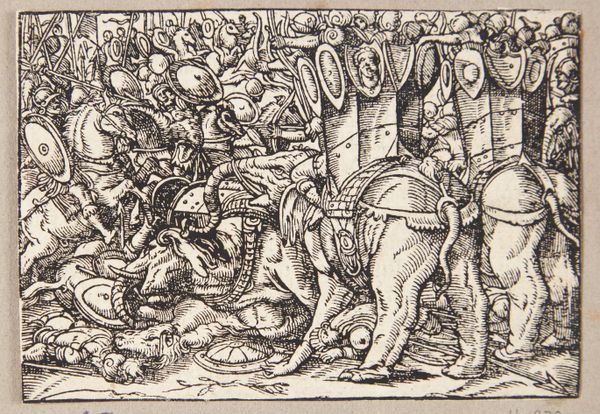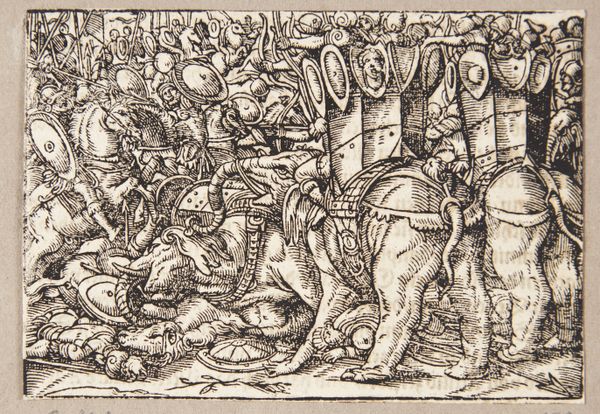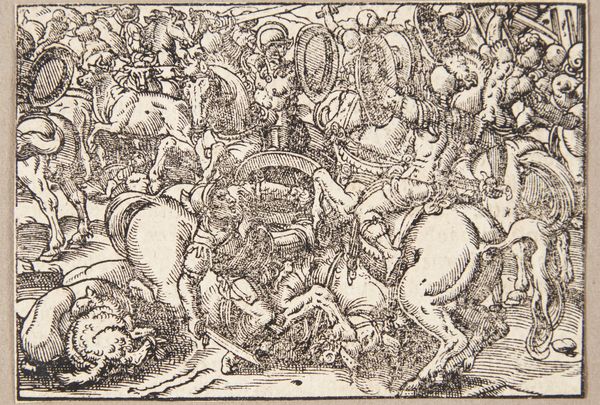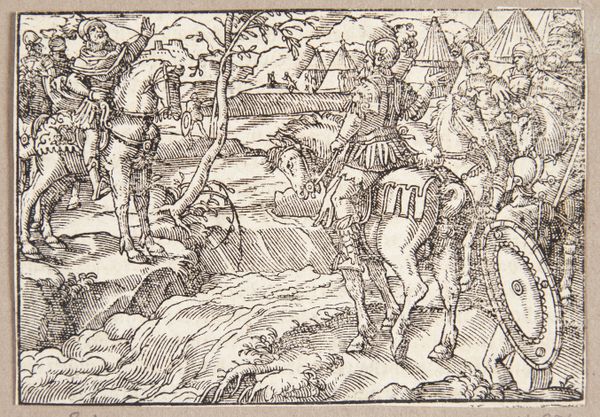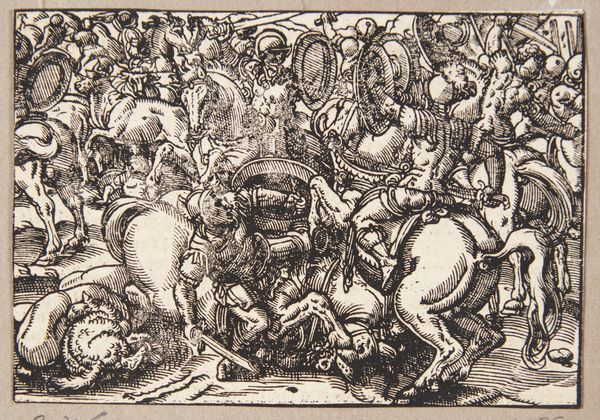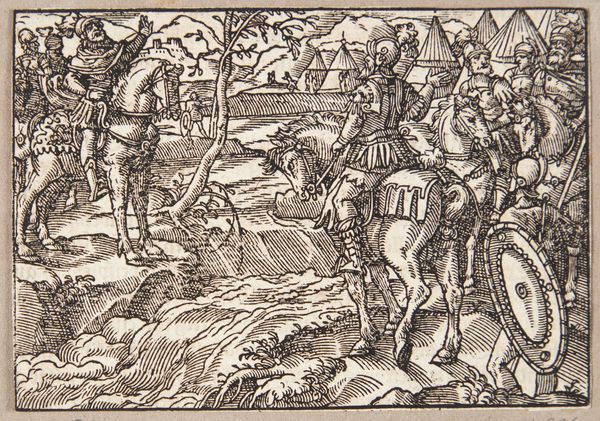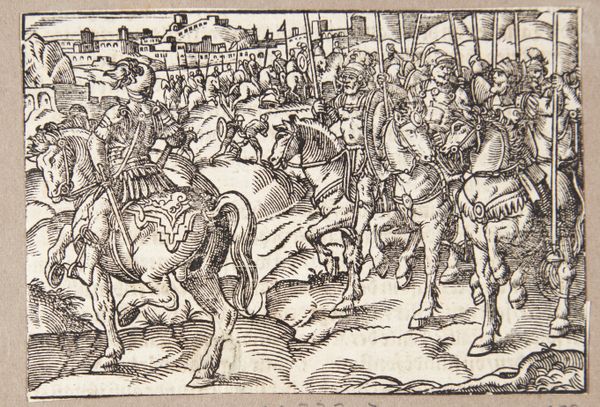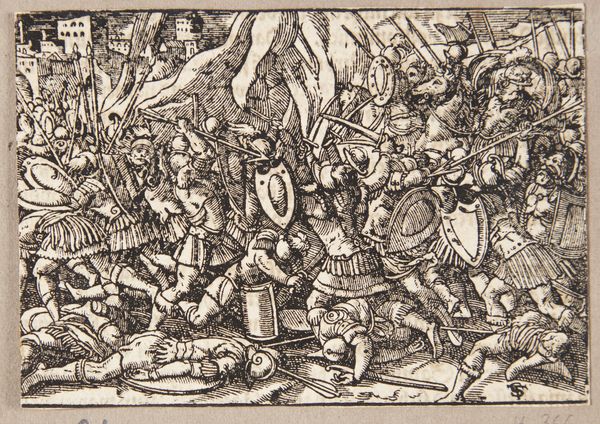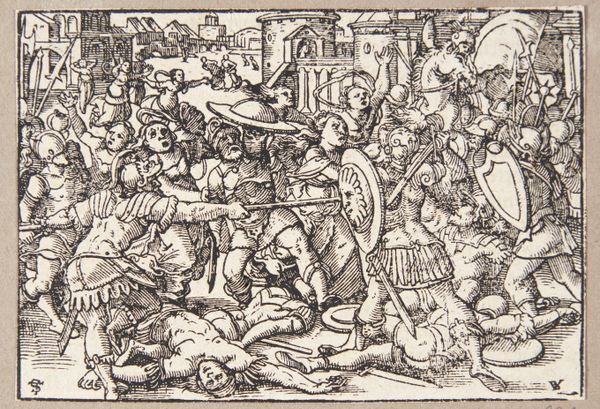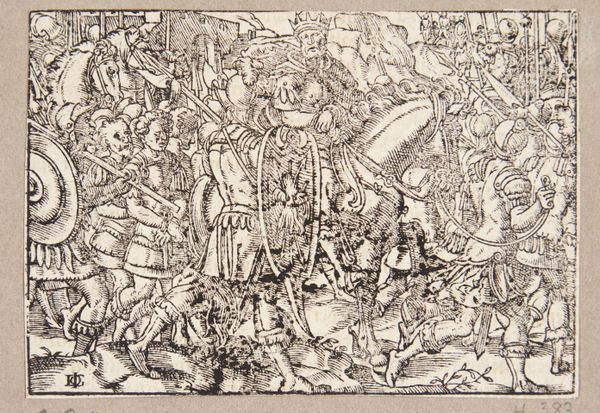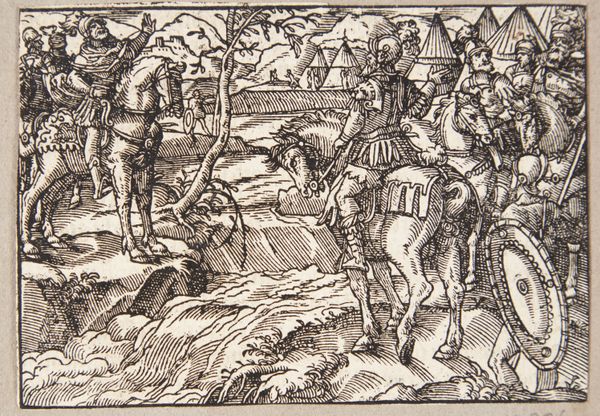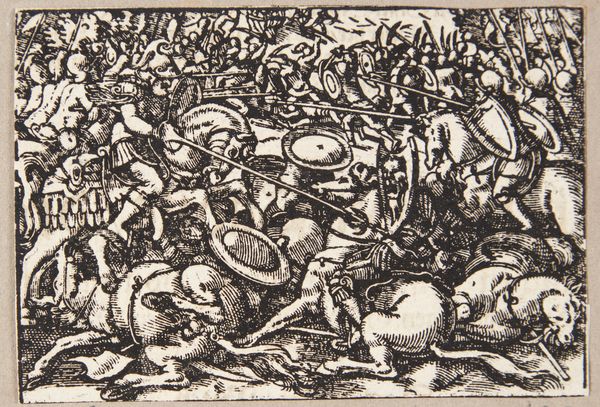
print, woodcut
# print
#
figuration
#
woodcut
#
history-painting
#
northern-renaissance
Dimensions: 75 mm (height) x 105 mm (width) (bladmaal)
Curator: Tobias Stimmer's "M. Decius Leading the Romans in Battle Against the Latins," a woodcut from 1574, is a fascinating example of Northern Renaissance printmaking. Editor: Chaotic is the word that springs to mind. It feels incredibly dense, a mass of bodies and movement packed into a small frame. Curator: That density is characteristic of the period. Stimmer, trained as a glass painter, translates a painterly sense of drama into the graphic medium of the woodcut. He packs the scene to emphasize the intensity of the battle. Editor: The choice to represent this historical battle through the sharp, contrasting lines of a woodcut seems almost deliberately brutal, reflecting perhaps the actual violence of the event. The clash of swords, the falling horses, it's all etched into the viewer's mind with a starkness that other media might soften. But, how accurate is its portrayal of this moment in Roman history? Curator: Historical accuracy in the modern sense wasn't necessarily the primary concern. The past often served as a repository for moral lessons and justifications of contemporary power structures. This specific moment highlights the alleged courage of M. Decius who is said to have sacrificed himself for a Roman victory. This kind of imagery played an important public role. Editor: Right. It’s less about faithful representation, and more about the narrative the artist—and his patrons—wished to promote. The composition suggests the divine right of power. The almost decorative use of violence feels oddly removed, aestheticized. In our contemporary view, is it appropriate to extract these historical, symbol-laden references? Does removing art from its time create the risk of erasing its underlying meanings, or does it perhaps permit fresh ones to come through? Curator: Context always shapes interpretation. Understanding the political climate and social function of art in Stimmer's time is vital, while engaging with contemporary perspectives allows us to address enduring issues of power and representation. Editor: It strikes me that viewing "M. Decius" is really an invitation to investigate how visual language both perpetuates and critiques societal ideologies. Curator: Exactly. And I would add that recognizing these nuances within historical artwork permits an honest conversation around our contemporary visual culture as well.
Comments
No comments
Be the first to comment and join the conversation on the ultimate creative platform.
